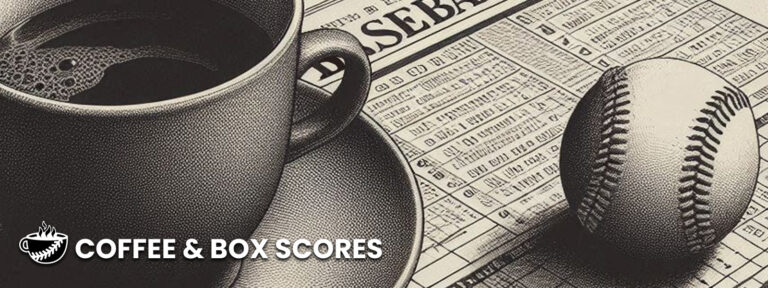On August 15, 2015, Boston’s Jackie Bradley, Jr. came to the plate six times. His first essay in the batter’s box resulted in a two-run homer. He then doubled, and then struck out to put a small, but fleeting damper on his afternoon at Fenway. After the whiff, he doubled again and again and then homered again to cap his star performance. In all, the right fielder tied a Major League record with five extra-base hits and drove in seven runs – all from the ninth spot in the batting order. Different folks may have other suggestions, but Bradley’s exceptional, historic submission has to be a finalist among the nominees for the greatest line ever produced by a batter hitting at the very bottom of the order.
Carson Kelly hit for the cycle to highlight the Cubs’ 18-3 rout of the Athletics.
~Kelly is the 12th Cub to hit for the cycle and the first since Mark Grace in 1993. The others to grace this list: Jimmy Ryan (twice), Hack Wilson, Babe Herman, Roy Smalley (the father), Lee Walls, Billy Williams, Randy Hundley, Iván de Jesús, and Andre Dawson.
~Kelly is the 17th catcher in the modern era to go cycling and the first since J.T. Realmuto in 2013. The aforementioned Randy Hundley is on this list and special notice goes to Mickey Cochrane, the only backstop to appear twice. It’s interesting that for such a small group, there’s a lot of franchise multiples:
Brewers (3): Charlie Moore, Chad Moeller, George Kottaras
Cubs (2): Randy Hundley and Carson Kelly
White Sox (2): Ray Schalk and Carlton Fisk
Giants (2): Jack Meyers and Harry Danning
Athletics (2): Mickey Cochrane twice
Pirates (2): Bill Salkeld and Jason Kendall
~Kelly is one of four number-nine hitters to hit for the cycle in the modern era. Fellow catcher Charlie Moore (1980) is among the quartet, as is third baseman Jeff Frye (2001) and center fielder Chone Figgins (2006). The ninth spot in the batting order is the least represented when it comes to cycles since 1901. The lineup card looks like this:
1901-2025: Batting Order Positions and Number of Cycles
Leadoff: 49 Players to hit for the cycle
Second: 38 players
Third: 72 players
Cleanup: 54 players
Fifth: 38 players
Sixth: 19 players
Seventh: 21 players
Eighth: 10 players
Ninth: 4 players
~Kelly added a pair of walks to his cycle – a feat previously accomplished twice. Cochrane did this in 1933 and Joe Gordon matched in 1940.
Kyle Tucker also collected four hits in the Cubs’ victory, with only a missing triple keeping him from matching Kelly’s feat. Dating back to 1901, Tucker and Kelly are one of four pairs of Cubs teammates to each have at least four hits with three going for extra bases in the same box score. Sparky Adams and Hack Wilson did this in 1927 and then found companions in 1980 (Iván de Jesús and Barry Foote) and 2004 (Moisés Alou and Aramis Ramírez).
Pete Alonso’s grand slam highlighted a four-homer, 11-hit barrage as the Mets took the Marlins down, 10-4. The 30-year-old has 227 homers, four of them with the bases loaded. In terms of Mets-focus, he’s 15 round-trippers shy of matching David Wright for second on the franchise list and now tied with a number of others for the ninth most slams in team history. In this latter category, he’s two behind the leader, Mike Piazza. Alonso’s 227 also gives him a top-10 mark for the most for any player in history through his first seven seasons; he’s currently matched with Nolan Arenado. With another 15 four-baggers this year, he’ll break into the first five:
Most HRs Through a Player’s First Seven Seasons
294 Ralph Kiner
282 Albert Pujols
253 Eddie Mathews
253 Ryan Howard
242 Mark Teixeira
In the Royals’ 11-1 win over the Brewers, Salvador Perez collected his first home run and first walk of the year. He now sits with 274 and 244 in the respective categories in the quest to become the first player ever to finish a career with at least 200 longballs and more of them than free passes (this will be a recurring bit, I’m fascinated by this).
With their loss to Kansas City, Milwaukee dropped to 0-4 on the year with the ugly numbers showing the club being outscored 47-15 (-32 differential). For all clubs since 1901, the 47 runs allowed tie this team with the 1954 Cardinals for the most through four games. In the same purview, the negative differential marks the worst for any team, eclipsing the -31 endured by the 1978 Orioles. In a nice bit of Yin and Yang, the 1978 Brewers own the BEST differential at this point, outscoring their opponents by 32 runs through four games (their first three came against, you guessed it, that beleaguered Orioles team).
Bowden Francis allowed two hits – both solo homers – in six innings and came away with a win as the Blue Jays took care of the Nationals, 5-2. The right-hander has made 14 starts in his career and in them, has surrendered 5.10 hits per nine, but also has a nice but not “wow” 2.93 ERA. The pathogen, to some extent, rests in those homers, which account for 15 of the 47 hits he’s allowed, which works out to 1.63 per nine innings (Francis is the pitcher who, in the span of four starts in 2024, twice lost no-hit bids in the ninth inning on home runs). To sum, Francis – as a starter – is a mix of Nolan Ryan in 1972 (when Ryan set a still-standing NL/AL mark if you discount the abbreviated 2020 season by allowing 5.26 hits per nine) and Bert Blyleven in 1986 (that season, Blyleven allowed a still-standing Major League record 50 longballs, an average of 1.66 per nine innings).
White Sox starter Martín Pérez worked six scoreless (and hitless) innings to thrust the White Sox to a 9-0 win over the Twins. Chicago has played four games and in all four, the club’s starter has finished his day at the office with no earned runs allowed (there are two unearned runs in there). In the liveball era, there are three other teams whose starters didn’t allow any earned runs through four games.
Team/Contributing Starters
1976 Brewers (Jim Slaton(2), Bill Travers, Jim Colborn)
2013 Giants (Matt Cain, Madison Bumgarner, Tim Lincecum, Barry Zito)
2019 Blue Jays (Marcus Stroman, Matt Shoemaker, Aaron Sanchez, Trent Thornton)
2025 White Sox (Sean Burke, Jonathan Cannon, Davis Martin, Martín Pérez)
The White Sox own a 0.75 team ERA, tying this club with its 1991 version for the franchise’s lowest ERA through four games in the liveball era.
Tyler O’Neill singled thrice and doubled once to play a significant role in Baltimore’s 8-5 win over Boston It’s the second time this season O’Neill has reached safely at least four times (Opening Day and now this, the Orioles’ home opener). He’s the ninth player in franchise history to have done this twice through five team games, joining Burt Shotton in 1912, Jack Tobin in 1921, Marty McManus in 1925, Frank Robinson in 1966, Bobby Grich in 1974, Ray Knight in 1987, Brady Anderson in 1997 and Ramón Hernández in 2006. In ’97, Anderson did this three times.
Like his Orioles teammate, Cedric Mullins used the home opener for his second big day of the year, after having one on Opening Day. In this win, Mullins drove in four runs, giving him a pair of games this season with at least four RBI (he had five in the opener). He’s the third player in franchise history to have two such games through the club’s first five, joining Charles Johnson in 2000 and Chris Davis in 2013 (Davis had three).
Elly De La Cruz had himself an evening at the ballpark with two home runs, a double and a single, a steal and seven RBI. Some noteworthy items:
~There have been plenty of lines featuring at least seven RBI and three-or-more extra-base hits: 316, including Cruz’s and Aaron Judge’s from this season. The installation of a stolen base in the mix thins the collection significantly, where De La Cruz is the 14th player in the room. Pirates outfielder Reb Russell was the first, in 1922; Shohei Ohtani, in late 2024, had been the most recent. De La Cruz is the first Red to make this list.
~This effort marked the sixth time a Reds player has produced a line with at least four runs, at least four hits and at least seven RBI. From most recent toward the past: Scooter Gennett in 2017 (this was his four-homer game); Dave Parker in 1987; George Foster in 1977; Walker Cooper in 1949; Alex Kampouris in 1937. The 23-year-old De La Cruz is the youngest of this collection.
~De La Cruz has 10 games with at least one home run and one steal. There are nine other players since 1901 who’ve had at least this many by De La Cruz’s current age (23 years and 79 days):
22 César Cedeño
15 Mike Trout
13 Álex Rodríguez
12 Barry Bonds
11 Ronald Acuña, Jr.
10 Andruw Jones, Justin Upton, Fernando Tatis, Jr., Bobby Witt, Jr., Elly De La Cruz
Jake Mangum – playing in his second career game – put together a 4-for-4 night at the plate as Tampa Bay defeated Pittsburgh, 6-1. The outfielder is one of 50 players since 1901 to produce a four-hit game so soon into his career, and the third oldest, at 29 years and 23 days, on the list. In late September in 1951, Jack Merson (29 years and 241 days old) went 4-for-5 with six RBI for the Pirates. In late September in 1943, Don Johnson (31 years and 294 days old) was 4-for-7 as part of a Cubs victory.
The Dodgers defeated the Braves to improve to 6-0 (and drop Atlanta to 0-5). The Padres kept pace with Los Angeles, winning their fifth straight to open the year. The Dodgers are 6-0 for the fourth time in the modern era, joining the 1940, 1955 and 1981 teams. The Padres are 5-0 for the first time in their franchise history. The Braves are 0-5 for the seventh time since 1901 and first time since 2016.
Thanks to Baseball Reference and its extraordinary research database, Stathead, for help in assembling this piece.

Roger Schlueter
As Sr. Editorial Director for Major League Baseball Productions from 2004-2015, Roger served as a hub for hundreds of hours of films, series, documentaries and features: as researcher, fact-checker, script doctor, and developer of ideas. The years at MLB Production gave him the ideal platform to pursue what galvanized him the most – the idea that so much of what takes place on the field during the MLB regular and postseason (and is forever beautifully condensed into a box score) has connections to what has come before. Unearthing and celebrating these webs allows baseball to thrive, for the present can come alive and also reignite the past.


